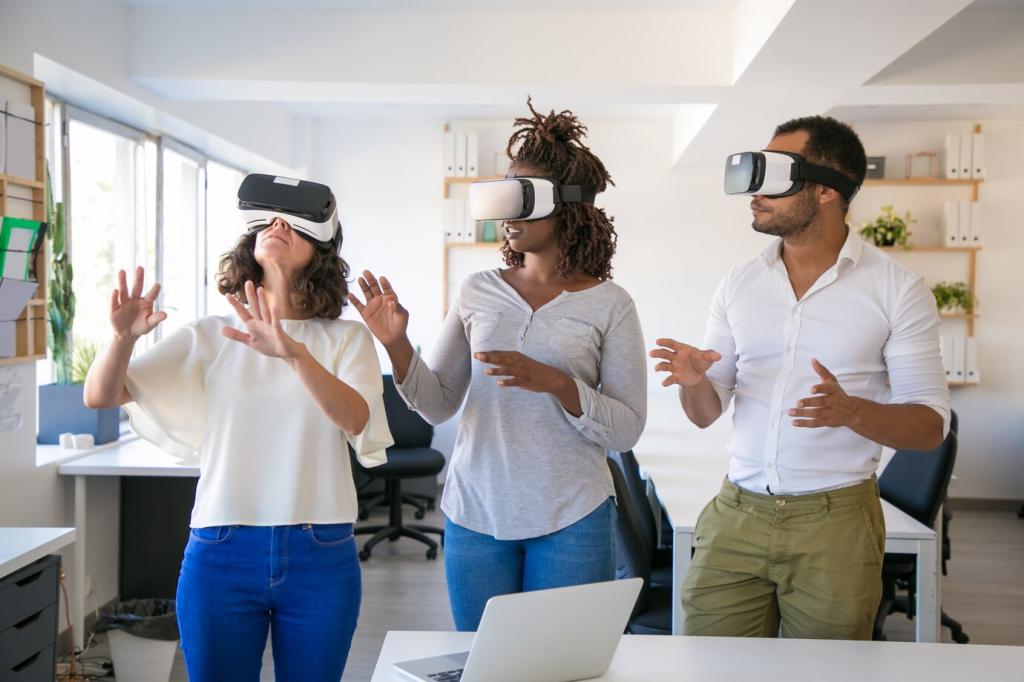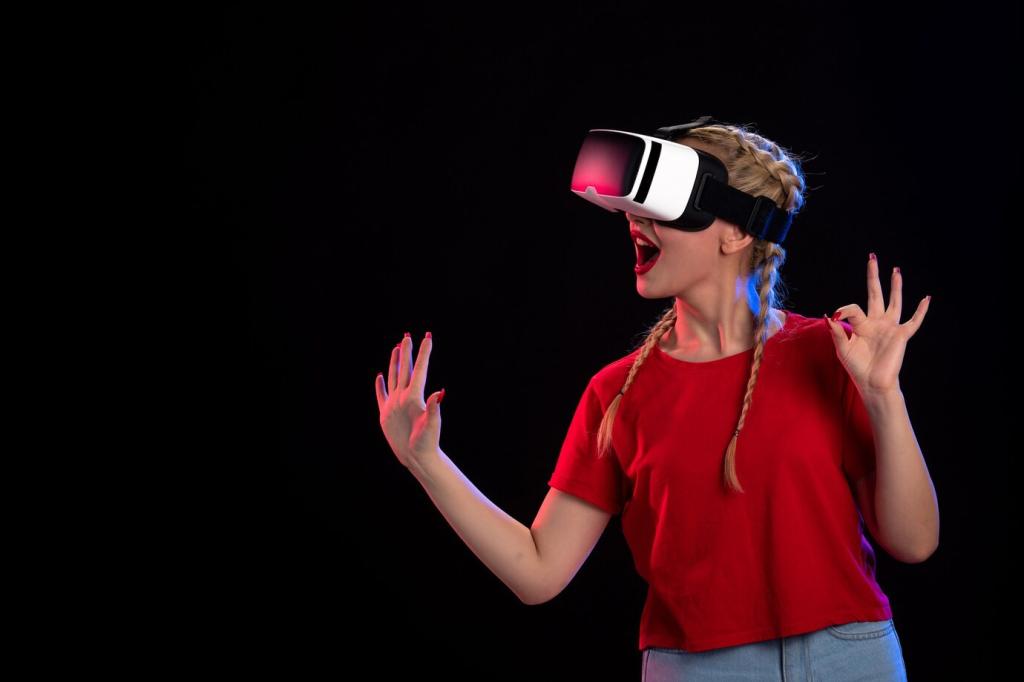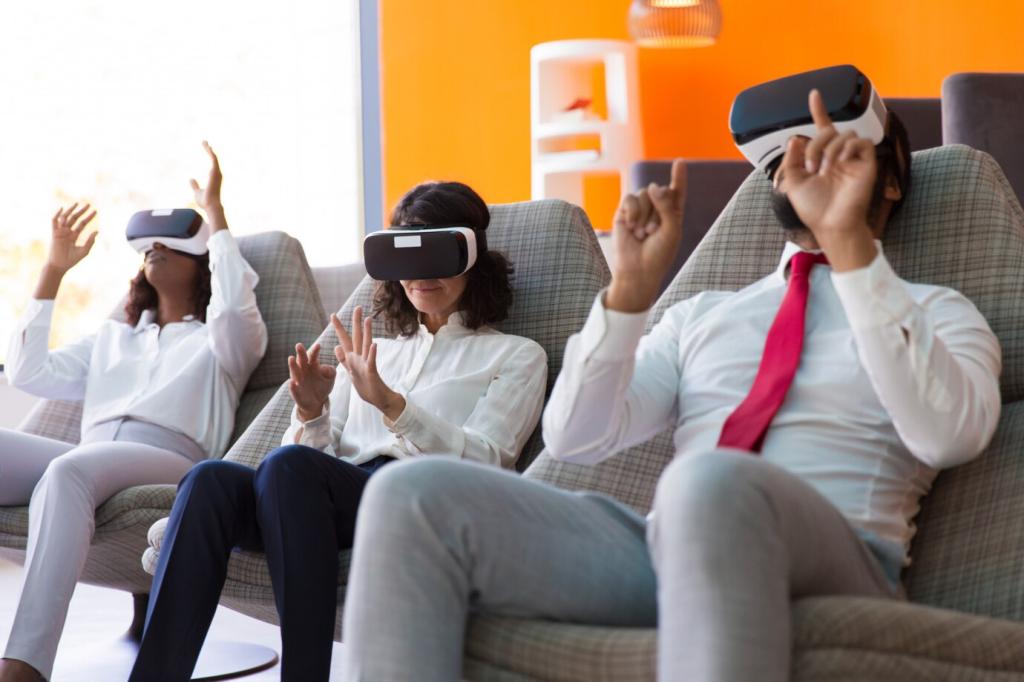The Impact of VR on Language Acquisition in English
Virtual Reality (VR) is revolutionizing how people learn languages, offering immersive environments that can accelerate and enhance English language acquisition. Unlike traditional methods, VR provides learners with realistic scenarios, interactive dialogue opportunities, and instant feedback. By simulating real-life conversations and cultural contexts, VR helps users develop a deeper understanding of English, both in written and spoken forms. This page explores how VR is impacting English language learning, examining cognitive engagement, personalized learning experiences, interaction and motivation, and the challenges and future prospects of this innovative technology.


Contextual Learning and Comprehension
VR situates learners in lifelike contexts, such as ordering food at a virtual restaurant or navigating a busy airport. These immersive scenes provide essential cues—body language, ambient sounds, and situational pressures—that reinforce comprehension. The contextual approach deepens understanding, as users practice language in meaningful interactions rather than isolated drills. Learners internalize new expressions and idiomatic phrases organically, building a robust foundation for real-world communication that often eludes traditional classroom settings.
Enhanced Attention and Focus
The novelty and interactivity of VR capture learners’ attention in ways that conventional materials cannot. With dynamic environments and immediate, task-based goals, English learners become highly focused, minimizing distractions that impede language intake. Because VR tasks require users to actively listen, respond, and negotiate meaning, the process strengthens working memory and information processing skills vital for language mastery. Sustained attention in VR sessions contributes to greater learning efficiency and a sense of immersion that fuels motivation.
Memory Retention and Recall
Research suggests that experiences encoded in VR are more likely to be retained and recalled accurately. English learners who practice conversational skills or vocabulary in a vivid, 3D environment develop stronger associative memories. This sensory-rich input, combined with situational context, creates multiple retrieval pathways in the brain. When learners later encounter similar situations in the real world, they’re more prepared to access and use the correct English expressions, thanks to the mental connections formed during immersive VR practice.

Responsive Feedback and Error Correction
VR technology can offer instant feedback when learners make mistakes or require clarification, closely mimicking a supportive instructor’s presence. This immediate correction helps learners grasp nuanced aspects of English, such as pronunciation, intonation, and grammar. Because feedback is delivered in a low-pressure, private environment, students are encouraged to experiment and make errors, a vital aspect of language growth. Over time, learners develop self-correction skills, increasing autonomy and confidence.

Customizable Learning Pathways
Every English learner has unique goals, strengths, and areas for improvement. VR platforms often allow users to select topics, difficulty levels, and specific skills to practice, from business English to everyday conversations. Adaptive analytics track progress and adjust scenarios accordingly, ensuring that challenges remain appropriate and stimulating. This autonomy within the learning experience leads to higher satisfaction, greater engagement, and sustained commitment to language goals.

Accommodating Diverse Learning Styles
VR is uniquely equipped to support visual, auditory, and kinesthetic learners alike. Through speech recognition, engaging visuals, and interactive tasks, English learners can approach challenges in ways that suit their individual preferences. For example, a learner might strengthen listening comprehension through simulated conversations, while another sharpens vocabulary by manipulating virtual objects. This versatility ensures that all learners can find strategies that resonate, making English acquisition more inclusive and effective.
Social Interaction and Motivation in Virtual Spaces
Simulated Real-World Conversations
VR-based language platforms often include scenario-driven dialogues, partner conversations, and group discussions where users can practice English in realistic settings. These simulations recreate everyday interactions—introductions, debates, negotiations—allowing learners to apply their skills in context. The pressure and unpredictability of real-time dialogue hone not just language, but also pragmatic and social skills, preparing users for genuine communication outside the virtual environment.
Collaboration and Peer Feedback
Collaborative VR activities, such as problem-solving games or joint storytelling, foster a sense of community among English learners. Working together towards common goals encourages the use of conversation strategies, negotiation, and cultural etiquette. Peers can provide supportive feedback, clarify misunderstandings, and serve as motivation to persist through challenges. These collaborative experiences mirror language learning in multicultural environments, making practice both social and enjoyable.
Motivation Through Safe Experimentation
VR environments create a safe space where learners can take risks and experiment with new language without fear of embarrassment. The anonymity and gamified aspects of VR encourage users to speak up and try complex expressions, knowing that mistakes are natural and expected. This freedom bolsters confidence, turning anxiety into motivation and making practice sessions more productive. As learners notice improvements and gain positive reinforcement, their intrinsic motivation to master English grows.
